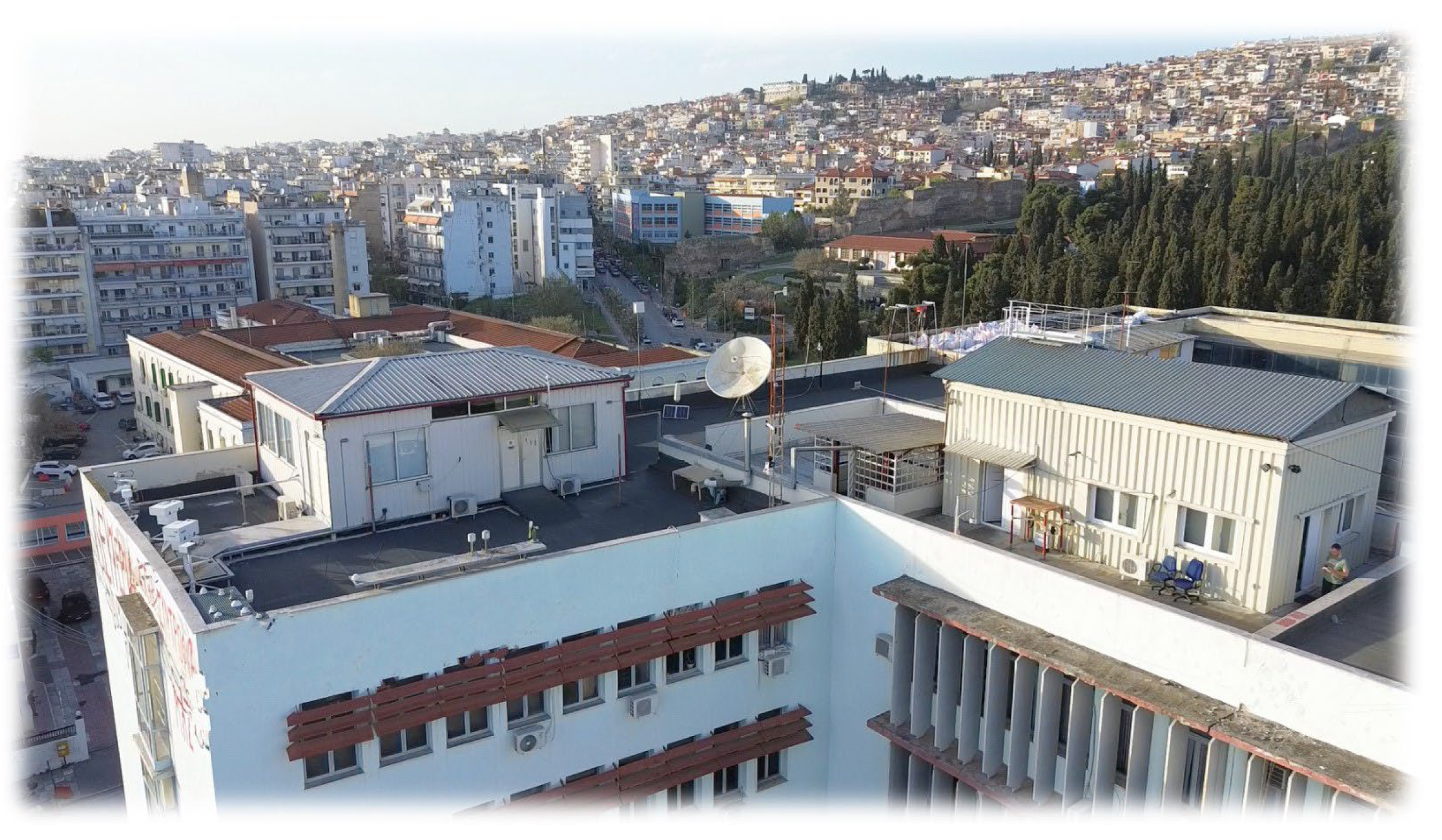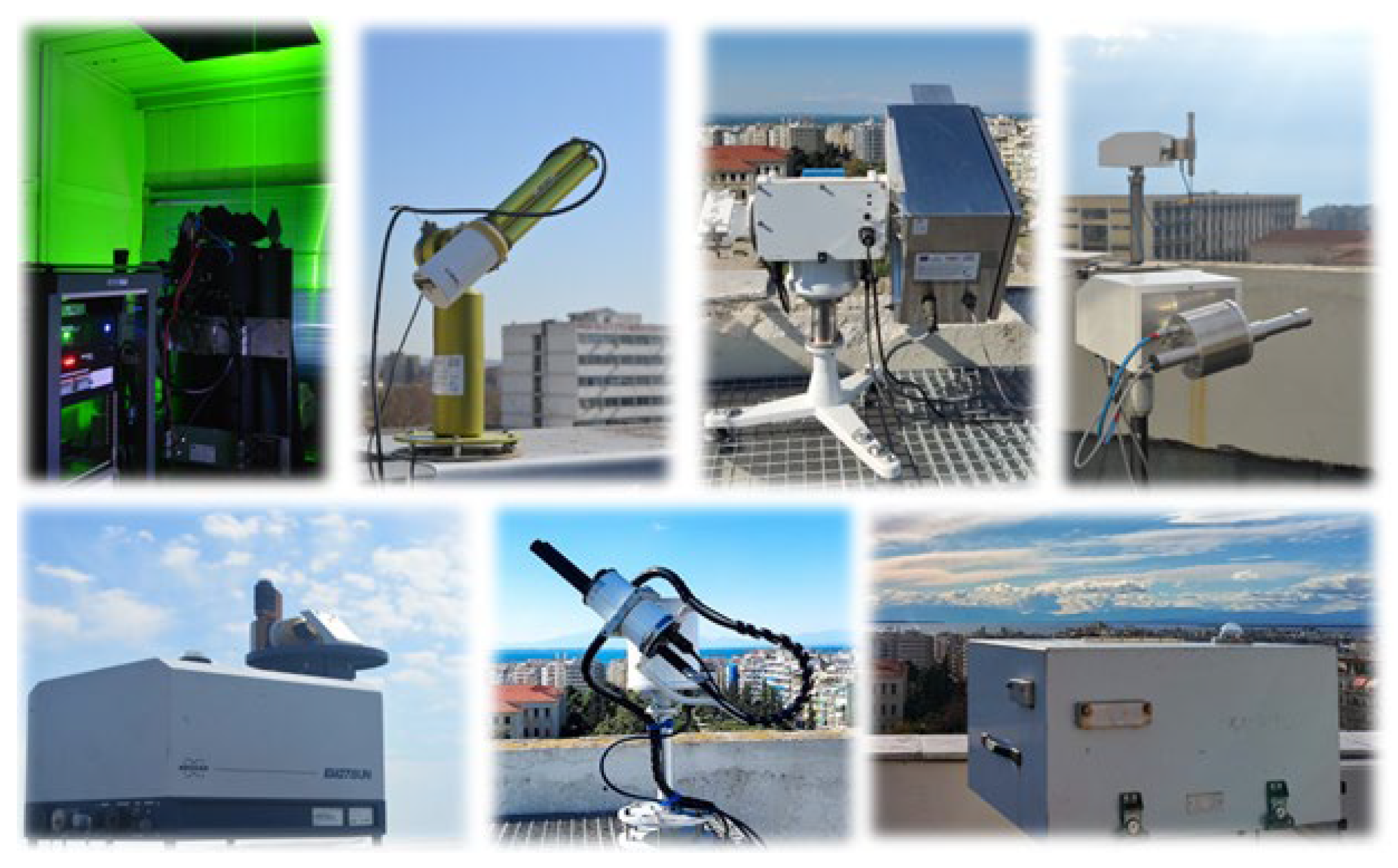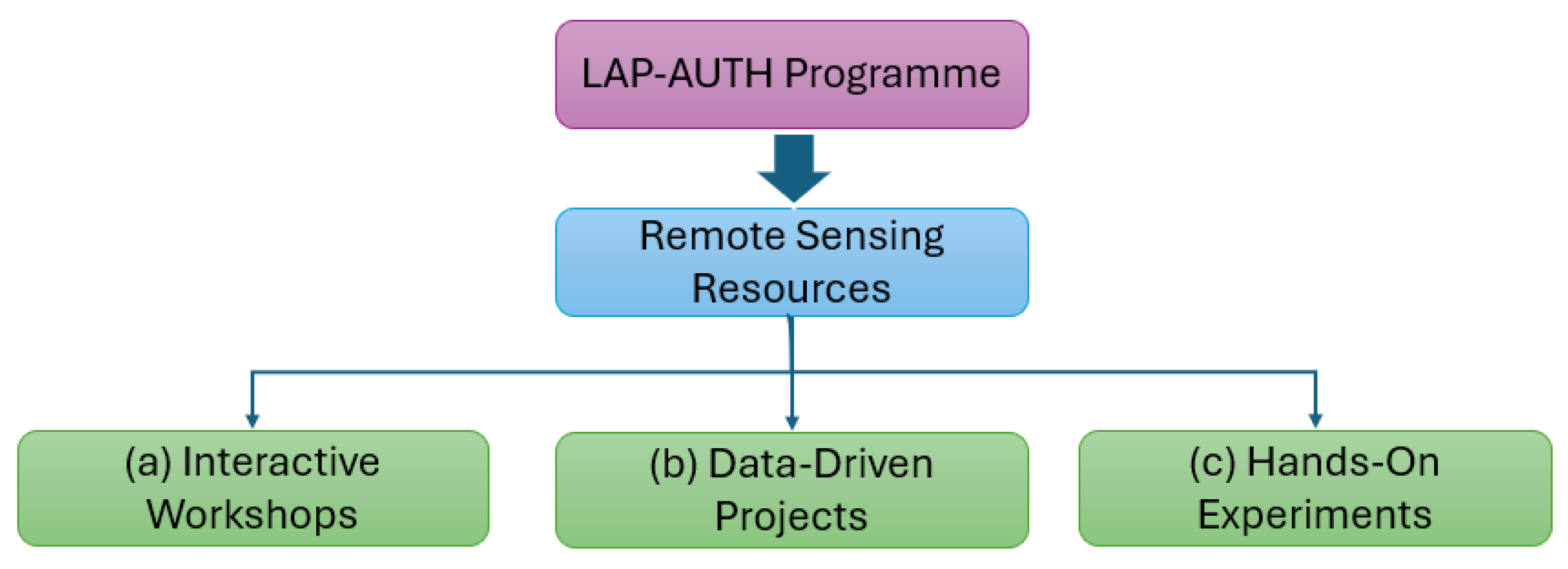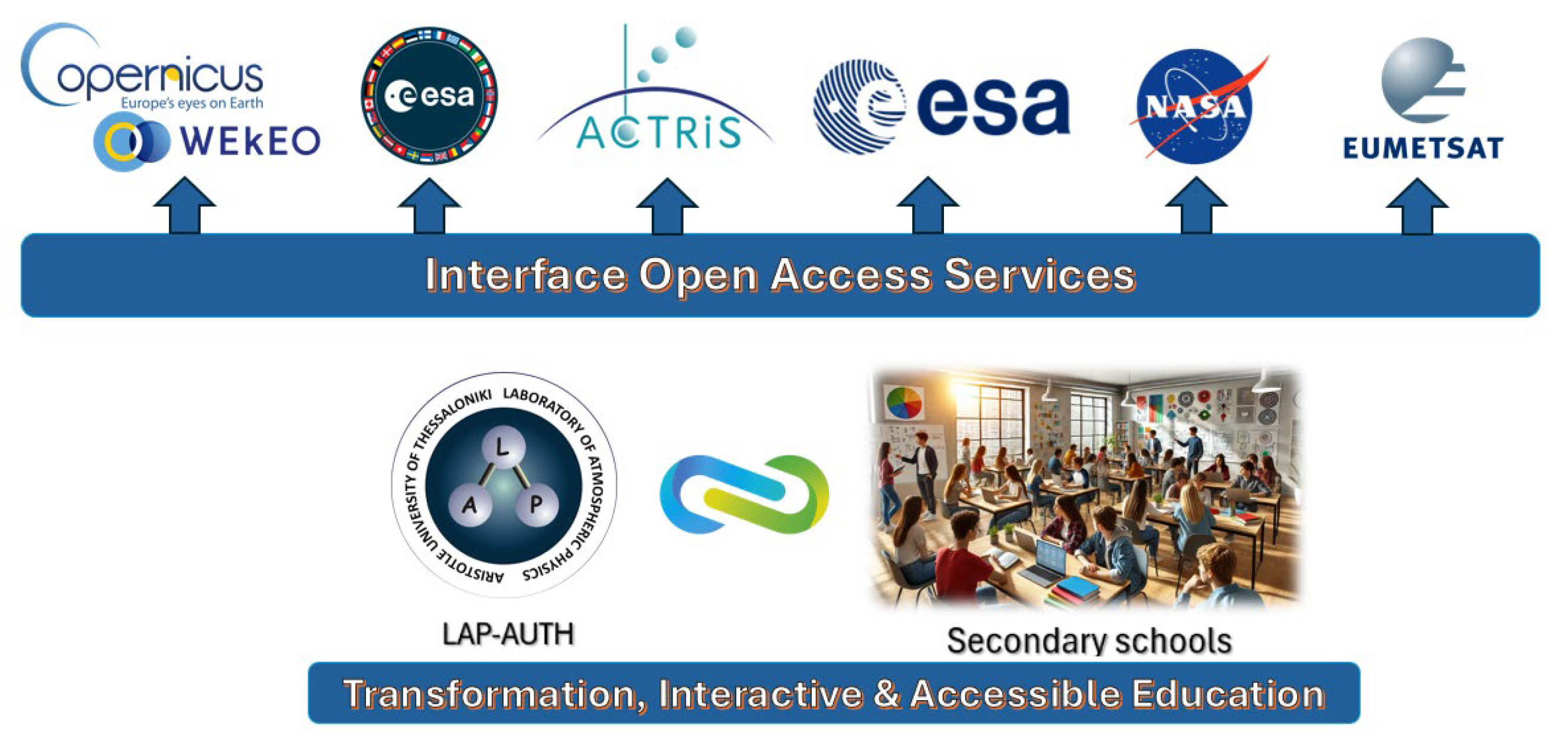Advancing Effective Climate Change Education by Using Remote Sensing Technologies: Leveraging the Research Infrastructure of the LAP/AUTh in Greece †
Abstract
1. Introduction
1.1. Remote Sensing as an Educational Resource
1.2. Laboratory of Atmospheric Physics (LAP), Greece
2. Educational Framework and Implementation Strategy
2.1. Description of the Learning Material
2.2. Data Resources and Learning Material
2.3. Expected Outcomes and Educational Impact
3. Discussion and Future Directions
Author Contributions
Funding
Institutional Review Board Statement
Informed Consent Statement
Data Availability Statement
Acknowledgments
Conflicts of Interest
Abbreviations
| ACTRIS | Aerosols, Clouds and Trace gases Research Infrastructure |
| ESA | European Space Agency |
| EUMETSAT | European Organisation for the Exploitation of Meteorological Satellites |
| LAP | Laboratory of Atmospheric Physics |
| AUTH | Aristotle University of Thessaloniki |
References
- IPCC. Climate Change 2023 Synthesis Report: Summary for Policymakers; IPCC: Geneva, Switzerland, 2023; pp. 1–34. [Google Scholar] [CrossRef]
- UNFCCC. United Nations Framework Convention on Climate Change. 1992. Available online: https://unfccc.int/sites/default/files/conveng.pdf (accessed on 10 May 2025).
- European Commission. Communication on The European Green Deal. 2019. Available online: https://commission.europa.eu/document/daef3e5c-a456-4fbb-a067-8f1cbe8d9c78_en (accessed on 10 May 2025).
- UNESCO. Getting Every School Climate-Ready: How Countries Are Integrating Climate Change Issues in Education; UNESCO: Paris, France, 2021; ED-2021/WS/35. [Google Scholar] [CrossRef]
- Amici, S.; Tesar, M. Building Skills for the Future: Teaching High School Students to Utilize Remote Sensing of Wildfires. Remote Sens. 2020, 12, 3635. [Google Scholar] [CrossRef]
- Cox, H.; Kelly, K.; Yetter, L. Using Remote Sensing and Geospatial Technology for Climate Change Education. J. Geosci. Educ. 2014, 62, 609–620. [Google Scholar] [CrossRef]
- Adaktylou, N. Remote Sensing as a Tool for Phenomenon-Based Teaching and Learning at the Elementary School Level: A Case Study for the Urban Heat Island Effect. Int. J. Educ. Methodol. 2020, 6, 517–531. [Google Scholar] [CrossRef]
- Voss, K.; Goetzke, R.; Hodam, H. Methods and potentials for using satellite image classification in school lessons. In Remote Sensing for Agriculture, Ecosystems, and Hydrology XIII; Neale, C.M.U., Maltese, A., Eds.; SPIE: Bellingham, WA, USA, 2011; Volume 8174, p. 81740K. [Google Scholar]
- Asimakopoulou, P.; Nastos, P.; Vassilakis, E.; Hatzaki, M.; Antonarakou, A. Earth Observation as a Facilitator of Climate Change Education in Schools: The Teachers’ Perspectives. Remote Sens. 2021, 13, 1587. [Google Scholar] [CrossRef]




Disclaimer/Publisher’s Note: The statements, opinions and data contained in all publications are solely those of the individual author(s) and contributor(s) and not of MDPI and/or the editor(s). MDPI and/or the editor(s) disclaim responsibility for any injury to people or property resulting from any ideas, methods, instructions or products referred to in the content. |
© 2025 by the authors. Licensee MDPI, Basel, Switzerland. This article is an open access article distributed under the terms and conditions of the Creative Commons Attribution (CC BY) license (https://creativecommons.org/licenses/by/4.0/).
Share and Cite
Michailidis, K.; Garane, K.; Topaloglou, C.; Balis, D. Advancing Effective Climate Change Education by Using Remote Sensing Technologies: Leveraging the Research Infrastructure of the LAP/AUTh in Greece. Environ. Earth Sci. Proc. 2025, 35, 3. https://doi.org/10.3390/eesp2025035003
Michailidis K, Garane K, Topaloglou C, Balis D. Advancing Effective Climate Change Education by Using Remote Sensing Technologies: Leveraging the Research Infrastructure of the LAP/AUTh in Greece. Environmental and Earth Sciences Proceedings. 2025; 35(1):3. https://doi.org/10.3390/eesp2025035003
Chicago/Turabian StyleMichailidis, Konstantinos, Katerina Garane, Chrysanthi Topaloglou, and Dimitris Balis. 2025. "Advancing Effective Climate Change Education by Using Remote Sensing Technologies: Leveraging the Research Infrastructure of the LAP/AUTh in Greece" Environmental and Earth Sciences Proceedings 35, no. 1: 3. https://doi.org/10.3390/eesp2025035003
APA StyleMichailidis, K., Garane, K., Topaloglou, C., & Balis, D. (2025). Advancing Effective Climate Change Education by Using Remote Sensing Technologies: Leveraging the Research Infrastructure of the LAP/AUTh in Greece. Environmental and Earth Sciences Proceedings, 35(1), 3. https://doi.org/10.3390/eesp2025035003





